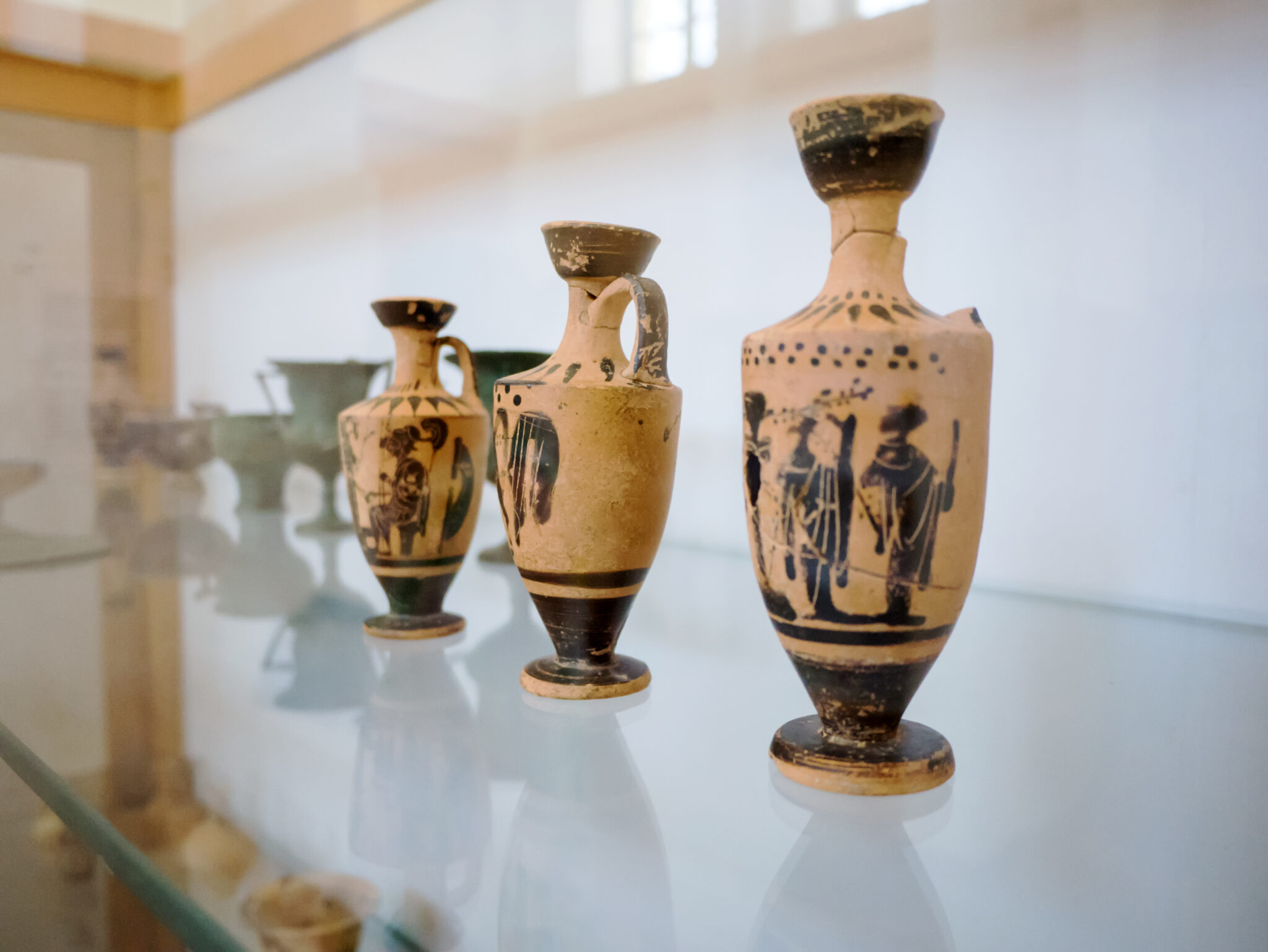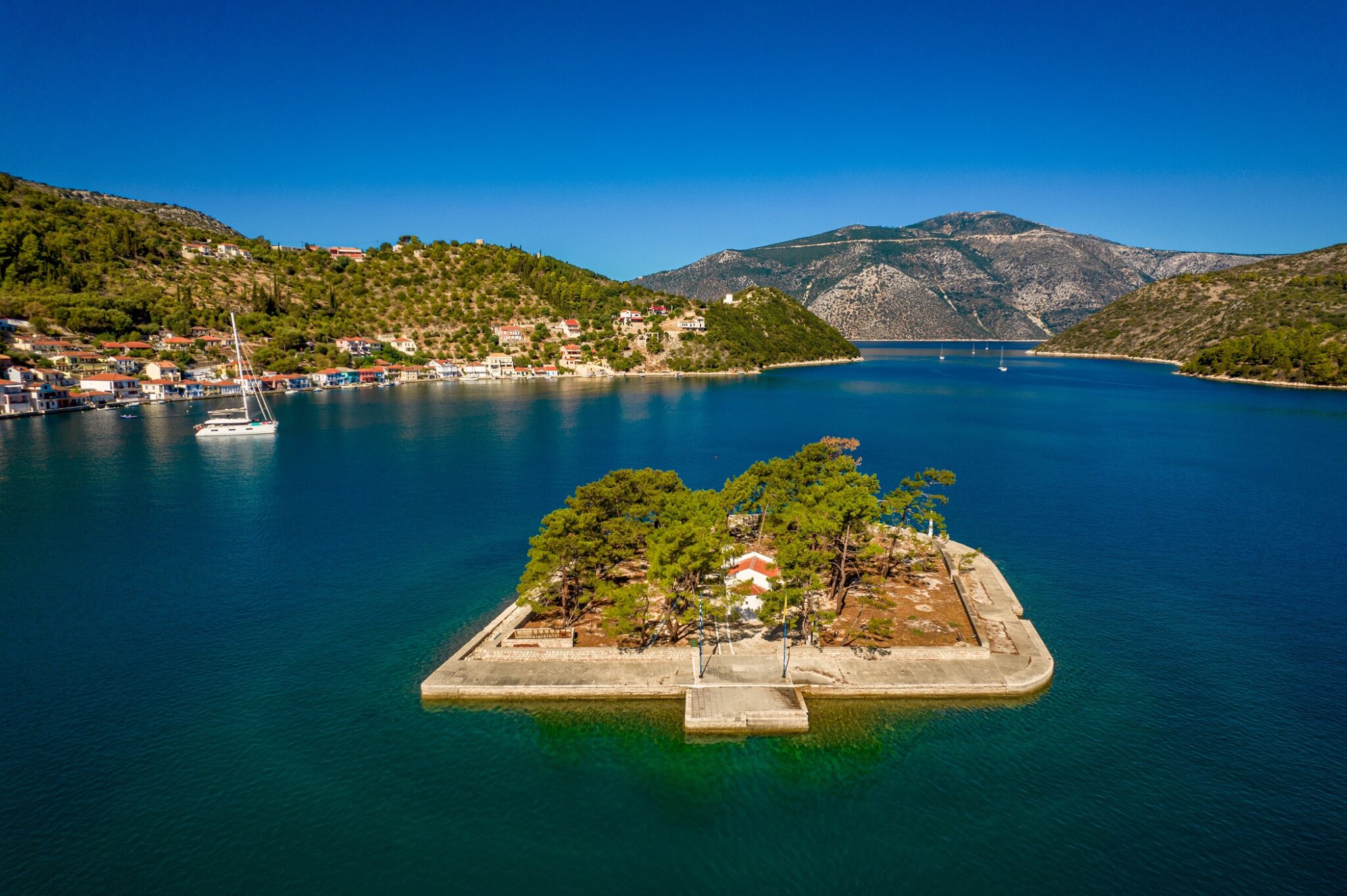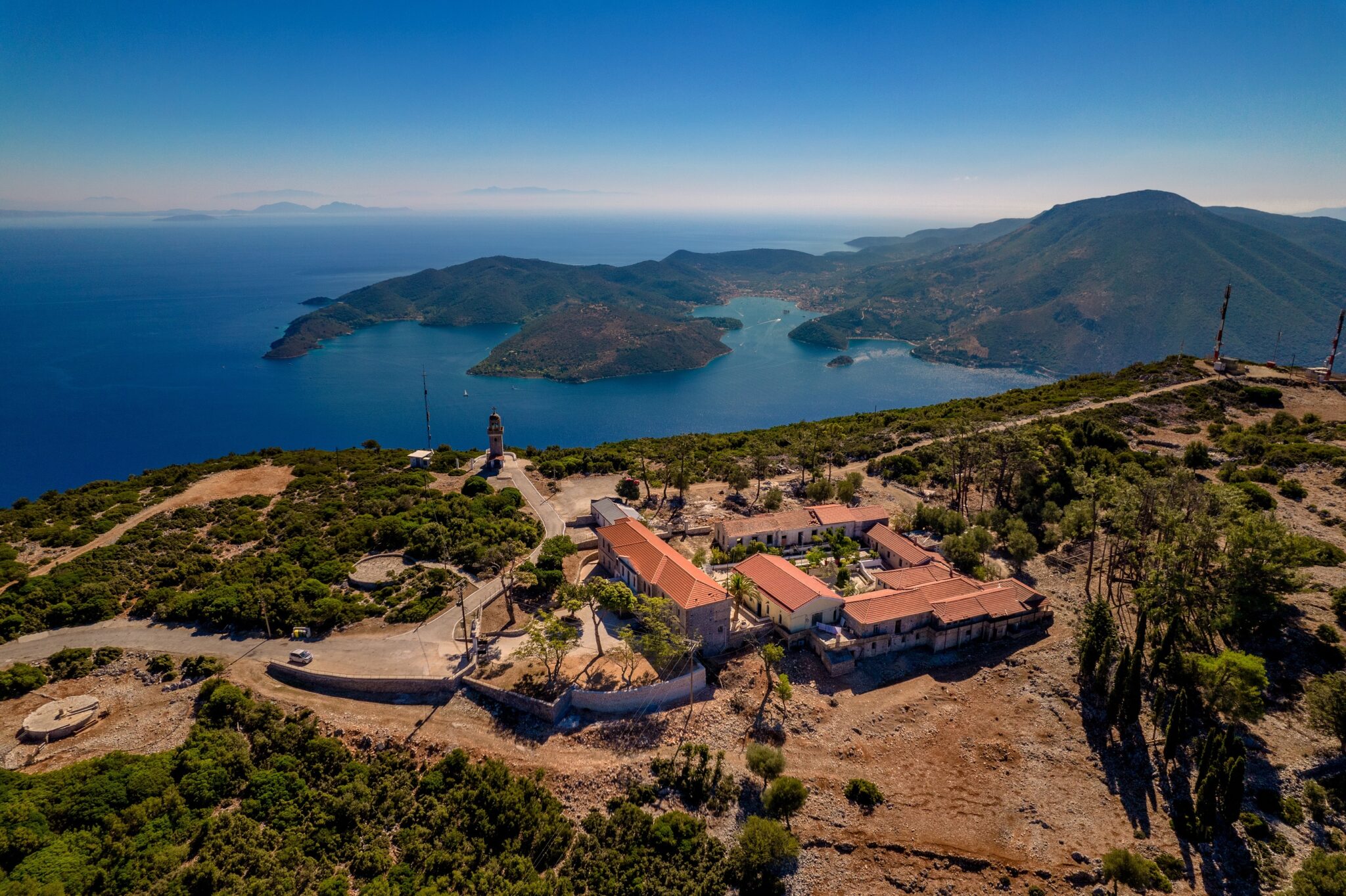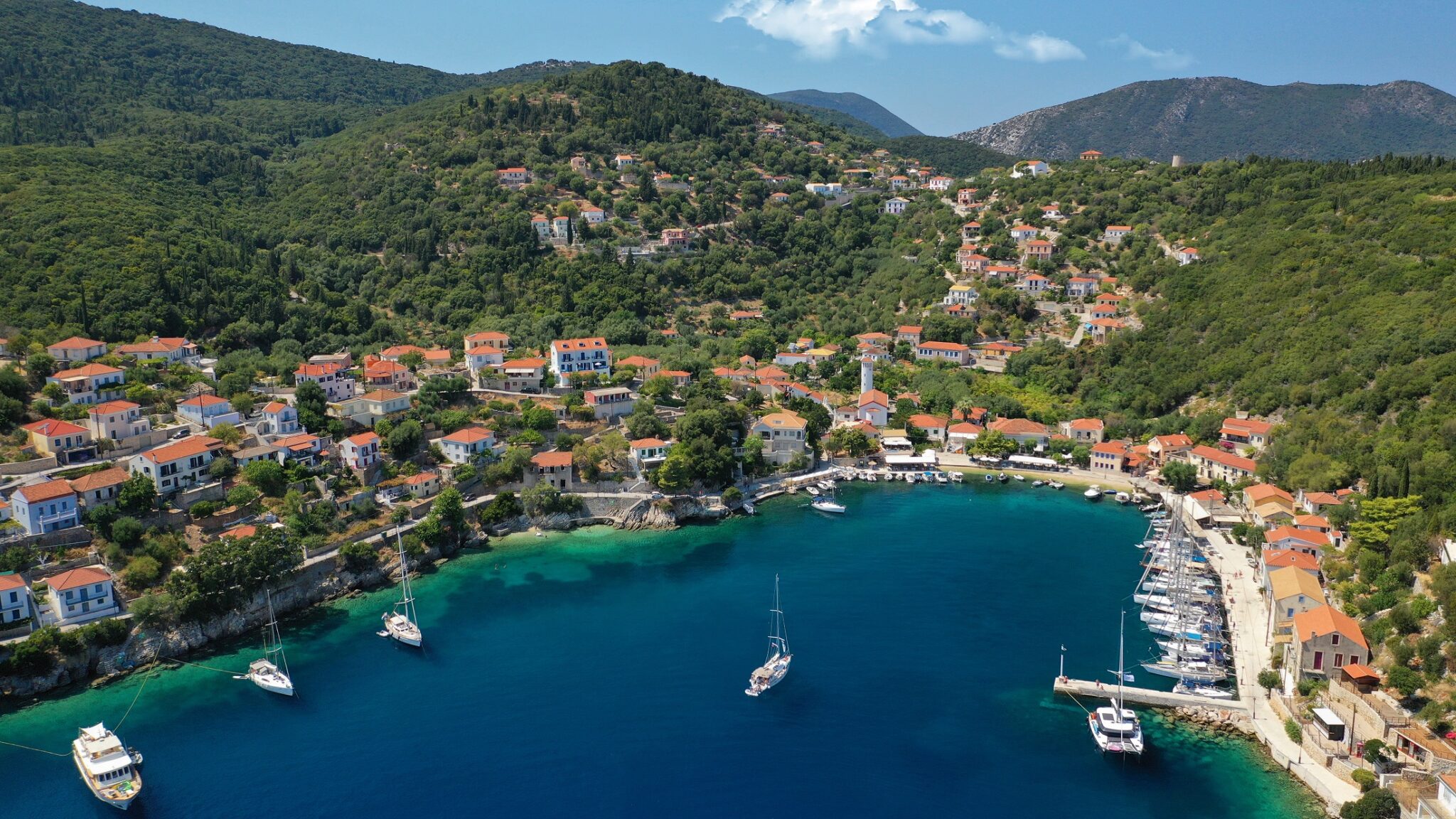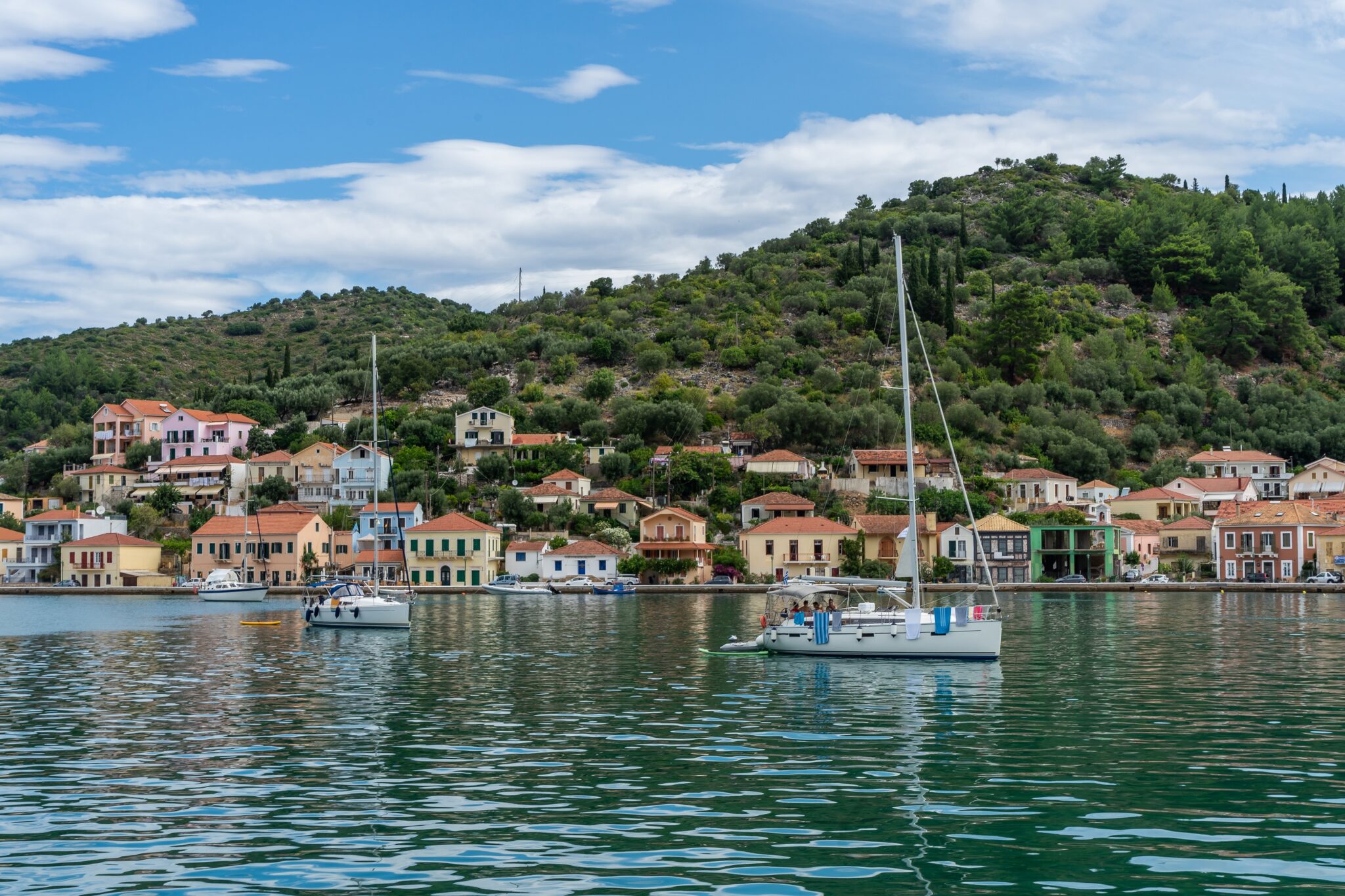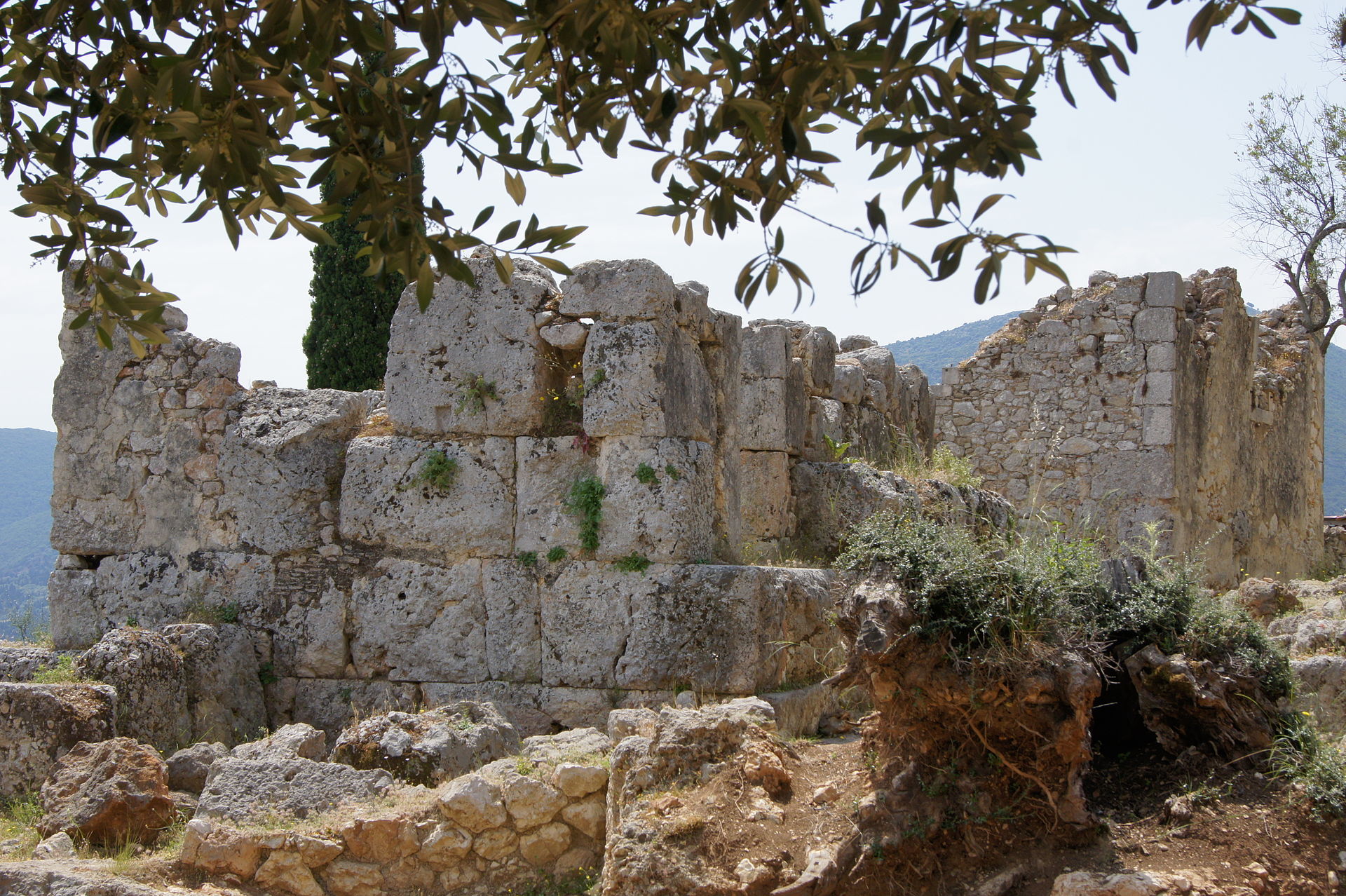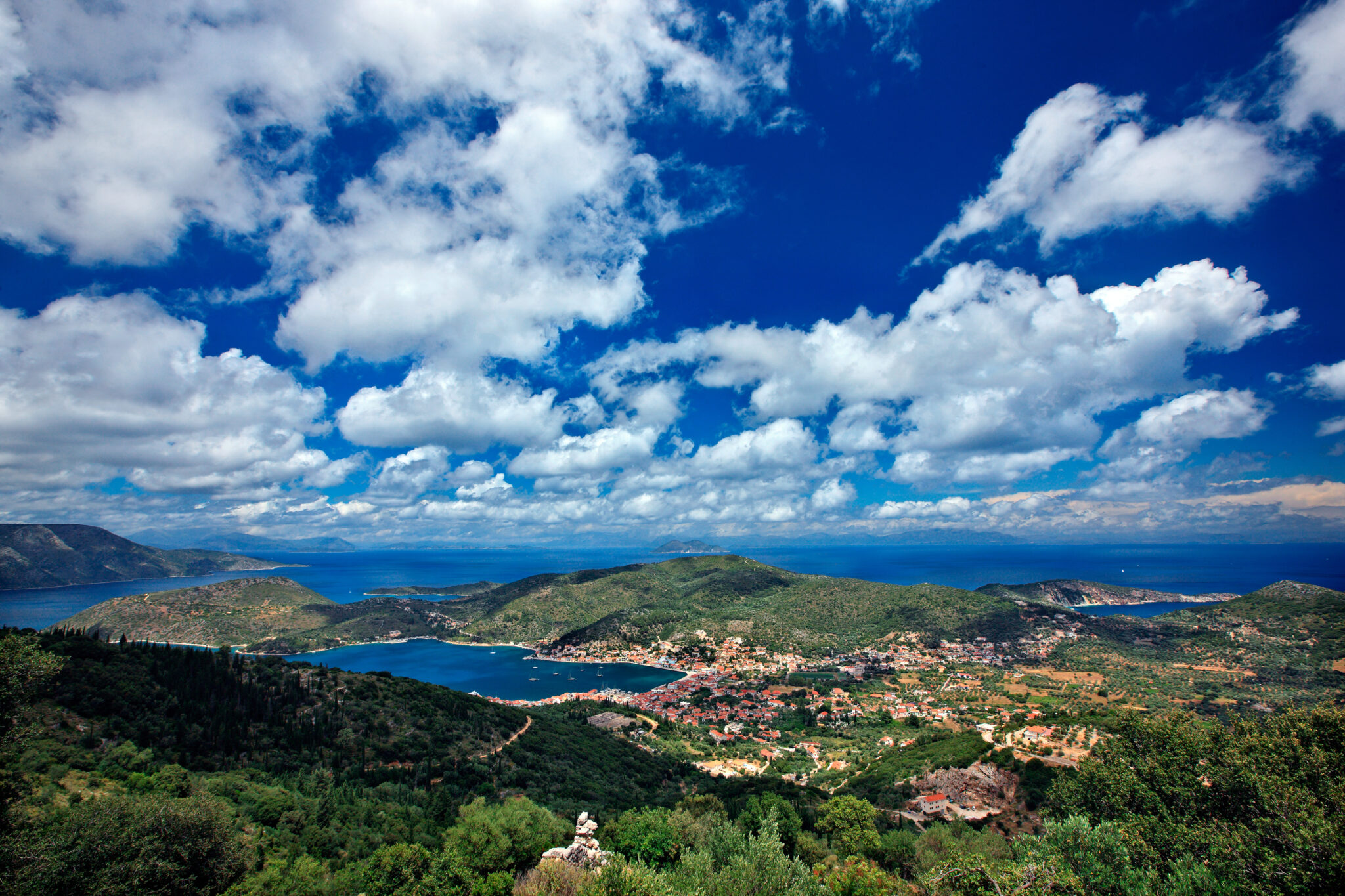Step into the fabled world of Ithaca, an island where charming seaside villages, ancient ruins, and sacred sites invite you to experience their captivating stories. Embrace the warmth of the island’s rich history, from the Monastery of Panagia Kathariotissa to the legendary Palace of Odysseus, and uncover its hidden gems, like the Cave of the Nymphs. As you stroll through the alluring villages, immerse yourself in local traditions and folklore, and let the magic of Ithaca touch your heart.
Monastery of Κatharon
Located 15 kilometres from the capital and perched at an altitude of 600 metres, the Monastery of Panagia Kathariotissa, patron saint of Ithaca, swells with pride as the island’s cherished treasure.
Cradled on Mount Niritos, a setting immortalized in Homer’s Odyssey, the monastery derives its name from the word “kathara,” meaning “dry-clad.” Local lore tells of villagers drawn to an ethereal glow emanating from this sacred spot. Upon clearing the area of dry twigs, the revered icon of the Virgin Mary, now housed in the monastery’s Catholic section, revealed itself.
Should your journey bring you to Ithaca in early September, delight in the monastery’s grand festival on September 8th. Witness the icon of the Virgin Mary as it traverses the sea and island settlements, bestowing blessings upon all of Ithaca.
Kioni
Seeking a picturesque island settlement, where time embraces the gentle curves of the sea? Look no further than the enchanting Kioni. This captivating seaside village boasts an array of stone houses adorned with blooming gardens. Here, tradition interweaves with charming cafes brimming with local colour and flavours, and elegant waterfront restaurants.
As the sun sets, Kioni’s warm, golden lights illuminate its cosmopolitan shops, evoking the allure of a renowned Italian resort. Yachts and boats find sanctuary in the cove, while nights are perfumed with the scents of vibrant flowers and verdant foliage that grace the slopes of lush Ithaca.
Vathi
All wanderings in Ithaca begin and end in Vathi, the picturesque capital and enchanting heart of the island. Resembling a scene from a painting, Vathi encircles a bay of turquoise waters, its traditional cottages, quaint museums, charming cafes, and exquisite restaurants painting a vivid tapestry of island life. And yet, amidst the echoes of ancient myths, the lively bars remind us that Ithaca remains a modern island.
From the waterfront shops, indulge in a serene evening as you gaze upon the islet of Sotiras, Lazaretto—one of Ithaca’s most iconic sights. This tiny island is home to a 17th-century church and a 19th-century building that once served as a plague infirmary, both standing as silent witnesses to the passage of time.
The palace of Odysseus
Countless stories, poems, and songs have been inspired by the myth of Odysseus, the legendary king of Ithaca, who was away from his homeland for 20 years. His mythical palace, vividly and eloquently described by Homer in the epic Odyssey, was shrouded in uncertainty until a decade ago, with many scholars doubting that Ithaca was the island the great poet referred to.
In 2010, however, ruins of a palace were discovered near the mountainous village of Exogi in Ithaca. This majestic structure, likely consisting of two or three levels, featured workshops, storerooms, a sewage system, and an underground water tank. A burial monument and a well dating back to 1200 BC were also found on site. The palace bears striking similarities to other known Mycenaean palaces, such as those of Mycenae and Nestor, placing it securely within the same period as the Trojan Campaign.
Though no evidence has been found in the impressive ruins to confirm the existence of a king named Odysseus, Homer’s text remains so definitive and influential that doubt cannot tarnish this wondrous myth. The palace now stands as one of Ithaca’s most famed attractions and one of the most significant archaeological discoveries in modern Greek history.
The villages of Ithaca
While Ithaca’s crystal-clear waters and fairytale-like seaside villages are renowned, the island’s lesser-known villages also deserve attention. Anogi, Frikes, Stavros, Exogi, near the Palace of Odysseus, and Perachori, high in the mountains, invite visitors to experience the authenticity of this magical place.
Cave of the Nymphs
As you continue your mythical journey, make a stop at the Cave of the Nymphs, also known as Marmarospilia on the island. This eerie cave, hidden at an altitude of 190 meters above the Bay of Dexa, is believed to be the very cave mentioned in Homer’s Rhapsody N of the Odyssey—a place of worship for the Nymphs in ancient Greece.
Today, visitors can enter the cave through a modern entrance on a paved road. Descending a staircase to a depth of about 10 meters, you will find yourself in an eerily beautiful chamber filled with stalactites. The findings from the archaeological excavations are displayed at the Archaeological Museum of Ithaca in Vathi.
Read also:
Savour the Tastes of Corfu: Food Adventures on an Ionian Island



